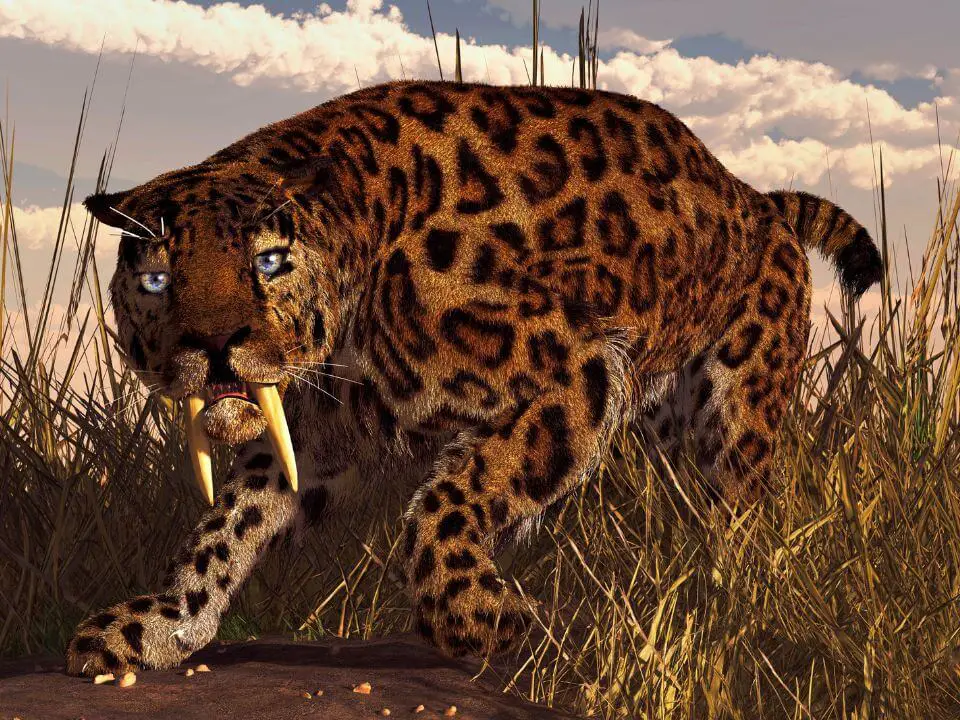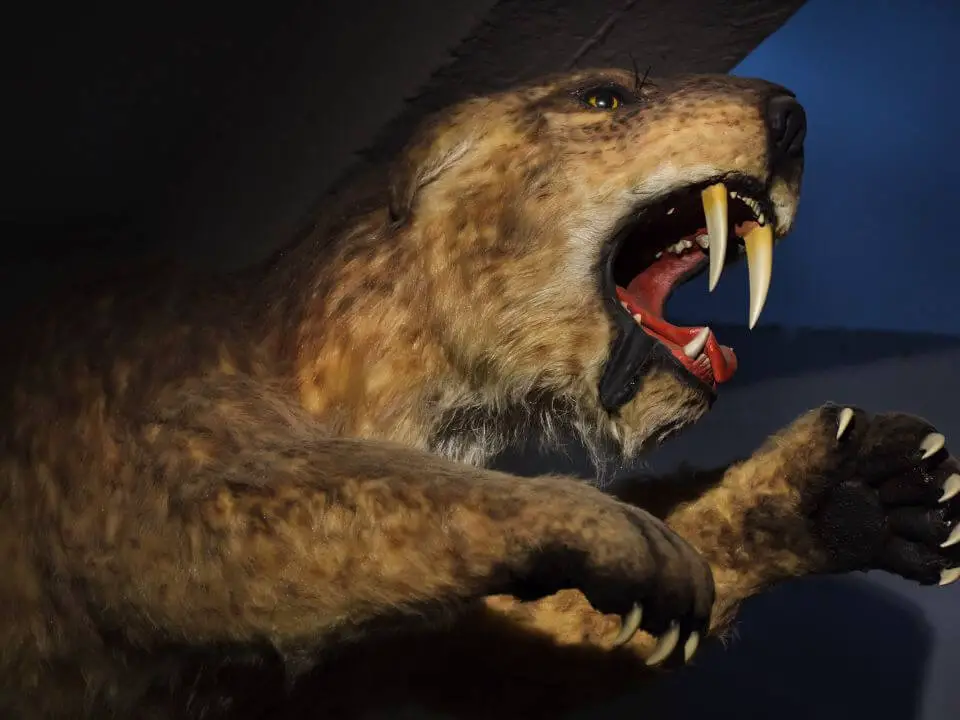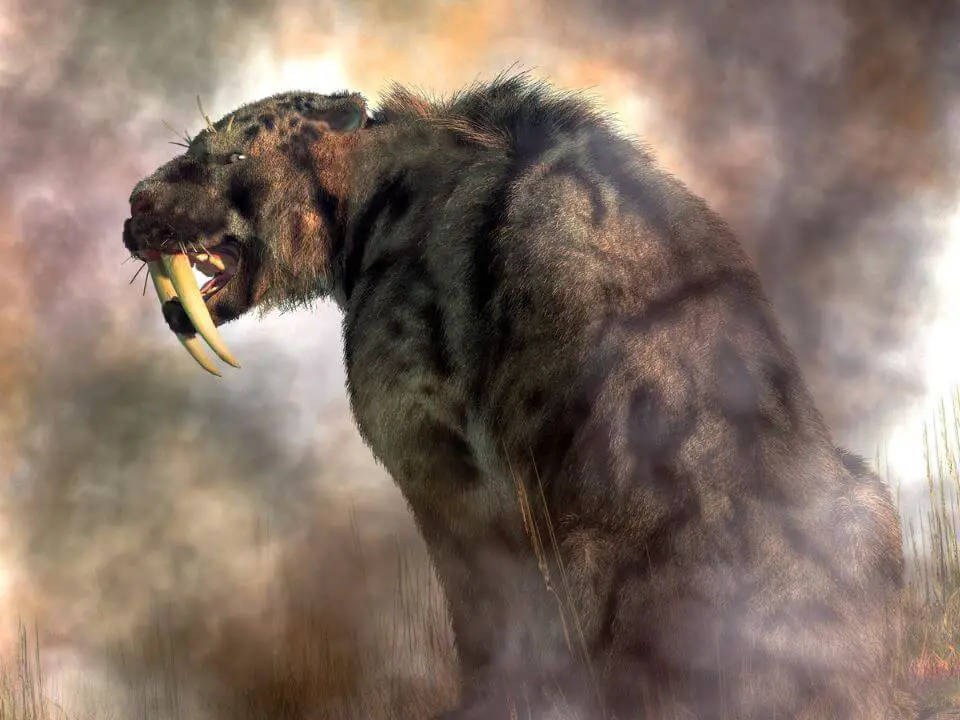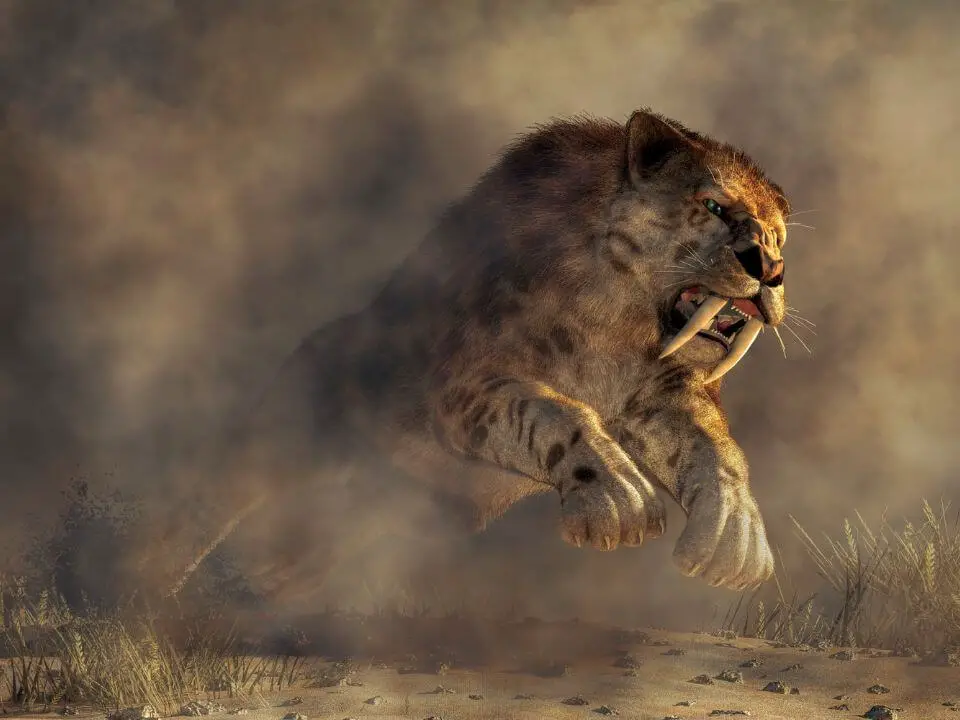The saber tooth tiger is a large, carnivorous cat that lived in North and South America during the Pleistocene epoch. The last known individual died in the La Brea Tar Pits in California about 10,000 years ago. Scientists believe that the species became extinct due to a combination of factors, including climate change, competition from other predators, and human hunting.
It is one of the most fascinating animals to have ever existed. They were massive, powerful predators with enormous teeth that could grow up to 12 inches long. So how did such a fearsome creature go extinct?
Why are Saber Tooth Tigers extinct?
Saber tooth tigers are extinct due to a combination of factors. First, they were hunted by humans for their fur and bones. Second, the Saber tooth tiger’s habitat was destroyed as humans encroached on their territory. Finally, the Saber tooth tiger was unable to adapt to changes in their environment, which led to their demise.

There are several theories about why saber tooth tigers went extinct, but the most likely explanation is a combination of factors. First, as the world became warmer at the end of the last Ice Age, their main food source – large mammals like mammoths – began to die out. Second, humans began hunting them for their valuable pelts and bones. And finally, as humans increasingly encroached on their habitat, Saber Tooth Tigers had less and less space to live and hunt in until they eventually disappeared altogether from the earth.

Saber tooth tigers were well-adapted to their environment and had few natural enemies. However, they were slow and cumbersome compared to other predators such as wolves and lions. As the climate began to change at the end of the Pleistocene epoch (around 12,000 years ago), forests gave way to open grasslands. This new landscape was unsuitable for saber tooth tigers as it made it difficult for them to stalk their prey undetected. In addition, they competed with faster predators who could more easily take down prey on open ground.
The loss of the Saber tooth tiger is a tragedy. They were an iconic species that played an important role in our ecosystem. The good news is that we can learn from our mistakes and take steps to prevent other species from going extinct.
🔬 Subscribe to SciMail
Get the latest science discoveries straight to your inbox!
How long have saber tooth tigers been extinct?

Saber tooth tigers have been extinct for over 10,000 years. They were one of the last large predators to disappear from the earth. Scientists believe that they became extinct because of a combination of factors, including climate change and competition from other predators.
Are saber tooth tigers coming back?
Saber tooth tigers are one of the most iconic prehistoric animals. For years, they have captured our imaginations and been the subject of many myths and legends. Now, it seems that they may be making a comeback – at least in spirit.
In recent years, there has been a growing interest in bringing back extinct animals through genetic engineering. This process, known as “de-extinction”, involves using DNA from preserved remains to create living organisms that are genetically similar to the original species. While saber tooth tigers have not yet been successfully brought back to life, there has been significant progress made in this area of research.

There are many reasons why people might want to bring back extinct animals like saber tooth tigers. Some see it as an opportunity to right past wrongs and give these creatures a second chance at life; others believe that de-extinction could be used to help conserve endangered species by creating “backup” populations; and still others simply find the idea fascinating and exciting (who wouldn’t want to see a real live dinosaur?). Whatever the motivation, it seems clear that de-extinction is an idea whose time has come – and with continued research and advances in technology, we may soon see more amazing creatures like saber tooth tigers roaming our planet once again.


Leave a Reply